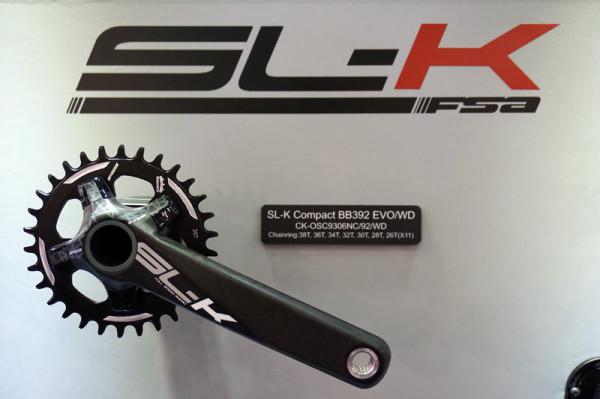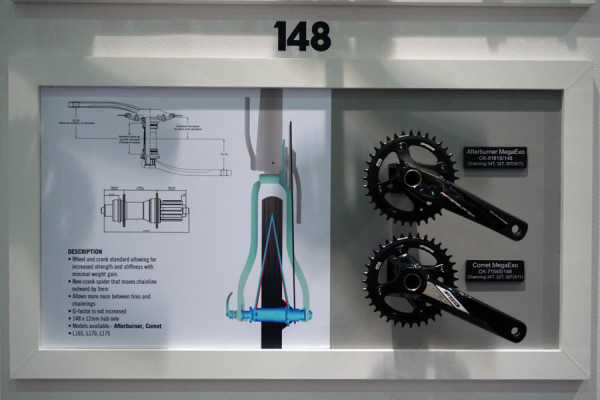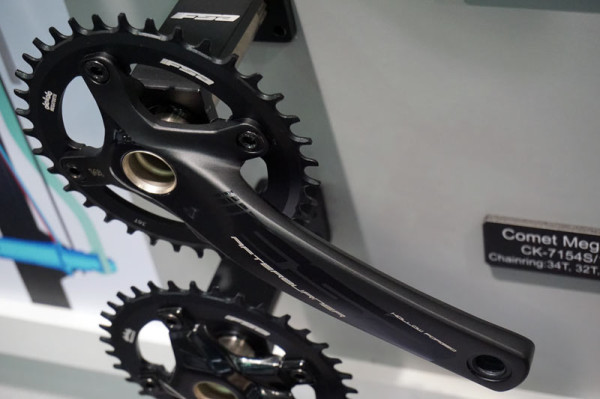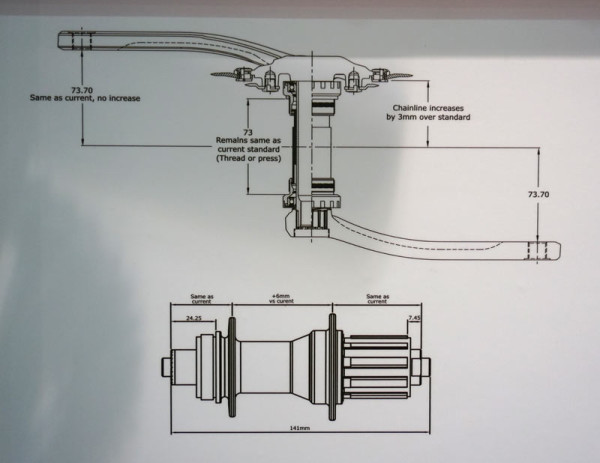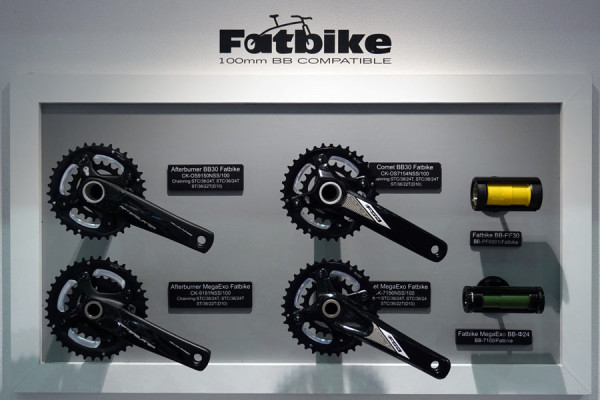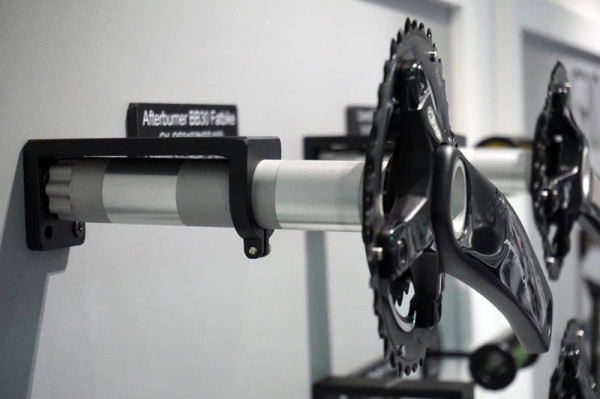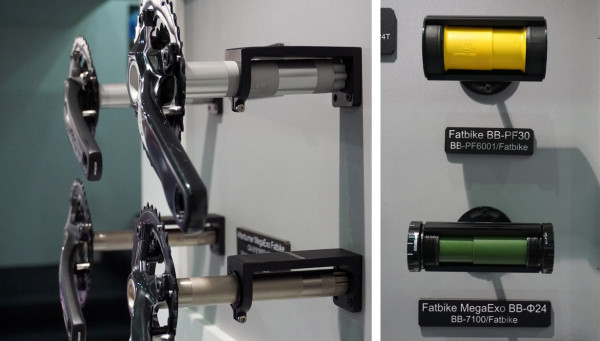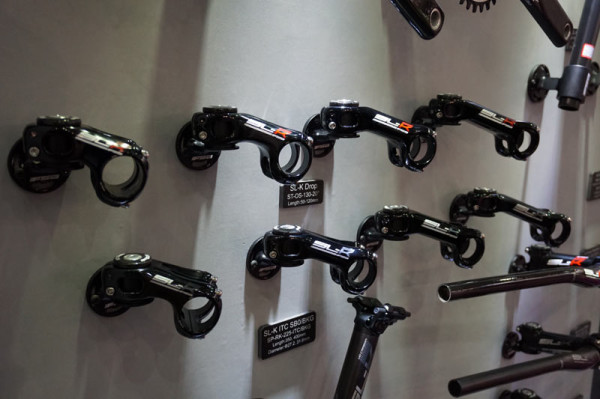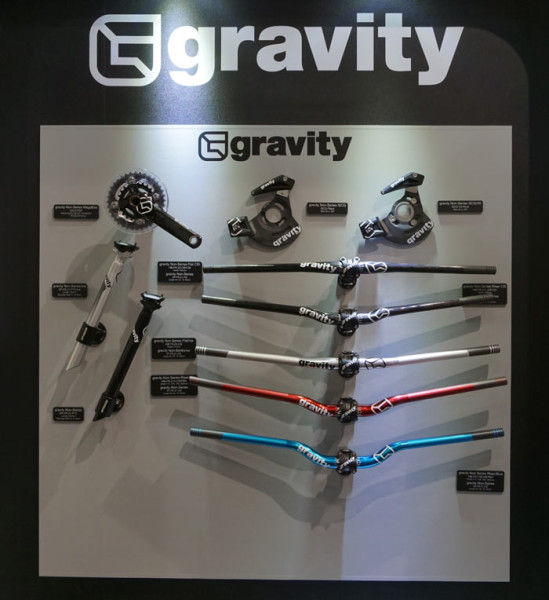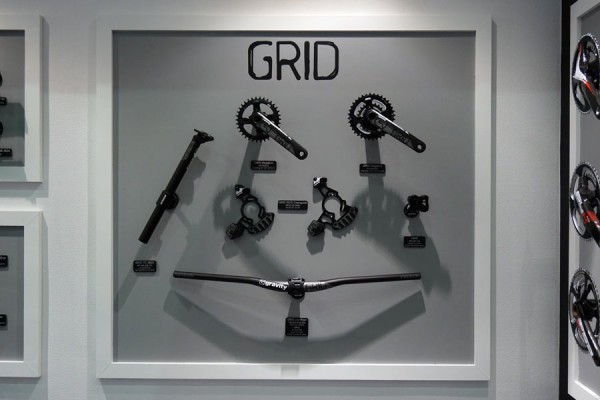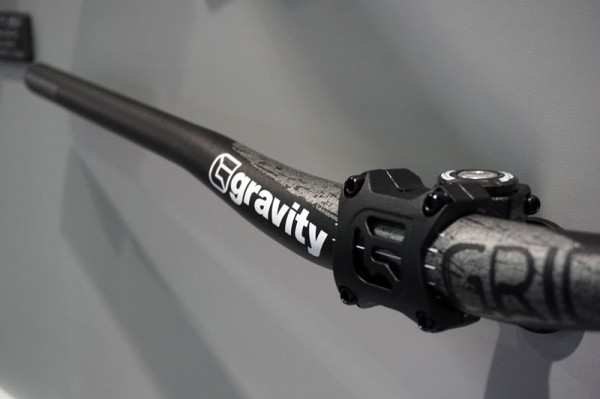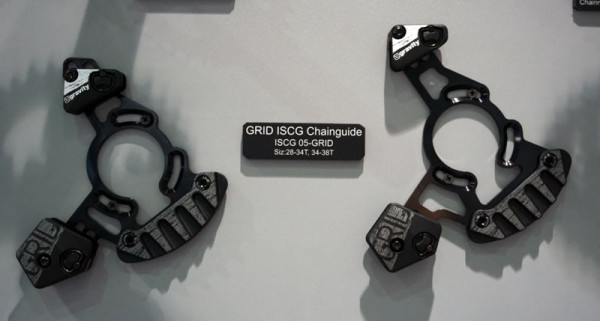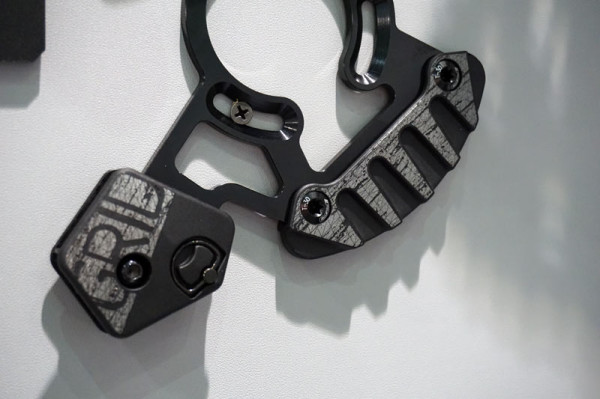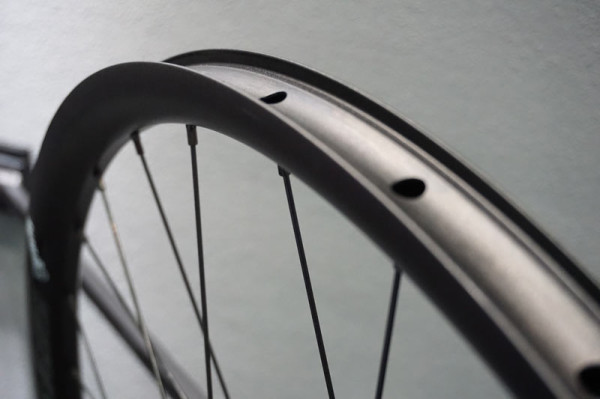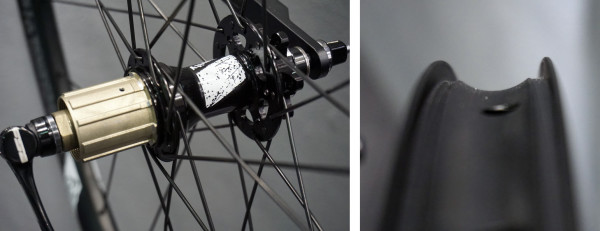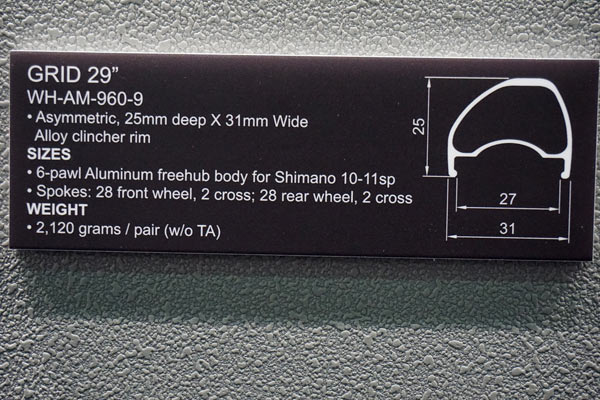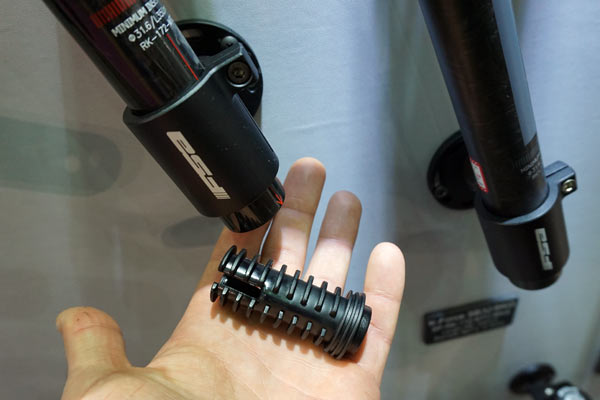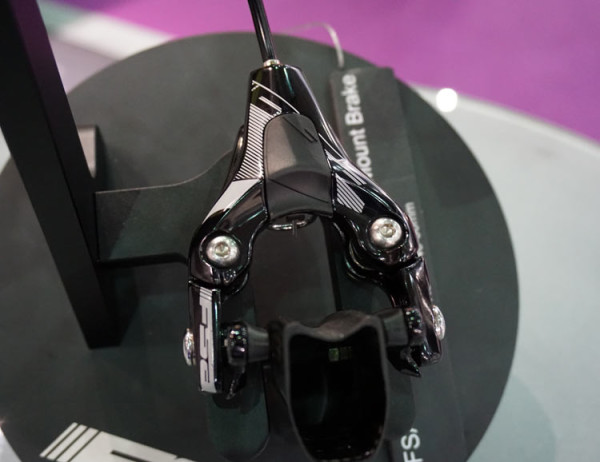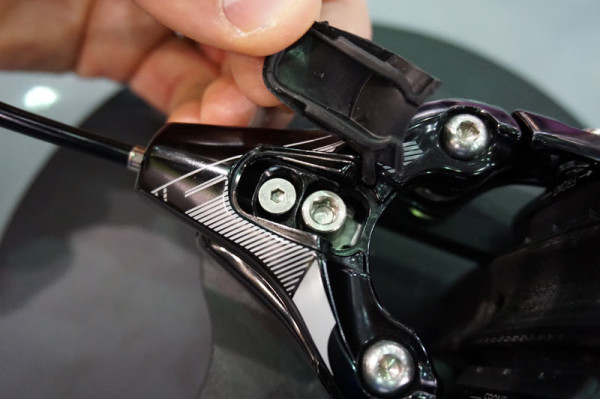FSA is updating their carbon SL-K and K-Force Light cranksets with an all-new BB392 spindle standard. Put simply, it’s a 92mm wide, 30mm diameter spindle that follows the logic of the BB386EVO standard they helped introduce for road bikes. Yes, it’s a new “standard”, but like the 386, it’ll work on any frame thanks to a variety of bottom brackets to go with it. Threaded BSA? No problem, the wider spindle makes room for an outboard bearing bottom bracket, which makes things even stiffer thanks to the wide bearing placement. Pressfit 30, PF92, etc., will all be accommodated, too, with this single new spindle size.
This eliminates the need for a steel spindle, which makes them lighter while still fitting any BB. The arms are a little more svelte than before, too, saving a few more grams and keeping Q-factor unchanged…and they get new, asymmetric and proprietary 4-bolt patterns.
But these aren’t the only ones getting a wider spindle. They’re joined by new Boost148 models and what is perhaps the first BB30 fat bike spindle. Check those and lots, lots more new stuff below…
Their new MegaTooth Narrow/Wide chainrings finally get real. The narrow wide tooth pattern combines with the overly tall teeth to give it a dual chain retention mechanism.
The mountain bike SL-K and K-Force Light use a new asymmetrical bolt pattern with a 76 BCD. They range from 26T up to 38T for MTB, and they’ll work with 9, 10 and 11 speed chains. For doubles, they have a new asymmetric 96/68 BCD that’ll work with 10 and 11 speed groups.
The upside to the new design? The K-Force Light crankset, which uses their hollow carbon arms, will now be a 425g crankset when set up with a single 32T chainring.
The alloy Afterburner and Comet cranksets will keep a 104BCD crankset option for another year alongside the new asymmetric bolt pattern. Eventually, though, all things MTB will transition to the asym versions.
Fortunately, both carbon cranksets will remain available in 110BCD for cyclocross in a 5-bolt pattern in classic tooth counts.
Boost148 cranks will be available for the alloy Afterburner and Comet MegaExo 104BCD cranksets.
The offset spider pushes the chainline out a bit to accommodate the wider hub spacing of Boost148.
Like the new carbon cranks, the Boost148 cranks keep the same Q-factor.
Ready for the third way things get wider? FSA’s new Fatbike cranks will gain a BB30 spindle option for the Afterburner and Comet to fit 100mm bottom bracket sizes.
They also made a bottom bracket for it:
Standard 24mm spindles will also be available (bottom). The bottom brackets are the same as regular ones, just with wider sleeves between them.
The SL-K 20mm drop stems we saw at Eurobike are now in stock. They have a very wide faceplate, so they help stiffen up the bar, too.
Not shown, the new ITC seatposts are now available, which use their fancy new saddle clamps to get either 0/5mm or 20/-5mm offset in a design that lets you adjust fore/aft separately from tilt.
The Gravity Light parts get rebadged as just Gravity and have fresh graphics. The bigger news, which wasn’t supposed to be news until mid April, was the addition of the new Gravity GRID lineup:
At first, we were told there’d be a very limited preview at Crankworx Rotorua this week. And then there was this very public display of the entire new line in their Taipei Cycle Show booth, which came with the request that we don’t spill all the beans until the official launch at Sea Otter. Considering they weren’t really talking, that’s easy enough, but some features can be gleaned simply by seeing them.
The Gravity GRID line is designed as a wallet friendly group for enduro/trail type riding. The cranks look to use a single spider for single and double applications, all using a standard 104BCD.
Everything’s alloy, and the seatpost uses the same flip-flop cradle to give it 0mm or 15mm offset. They wanted to offer a complete cockpit group even though they’re the first to admit most users of this group are going to be running a dropper seatpost.
The chainguides have a versatile design that makes them easy to adjust and easy to remove the crankarm for swapping chainrings.
Pull the pin and the guide will slide up and down to adjust height, or flip up to clear the chainring altogether.
The wheels were something they seemed pretty proud of, enough so to let slip a few details. As far as they know, these are the first asymmetric hookless alloy rims going into production. (UPDATE: As noted in the comments, they’re not the first hookless alloy rims, but Gravity folks clarified they’re the first with an asymmetric spoke placement, which allows for better triangulation and a stiffer wheel)
There’s a healthy bead lock channel to keep the tire in place, and the hookless design supposedly give the tire a better profile and better feel. It’ll be available in 27.5″ and 29″ options with all the usual axle options.
Retail should be around $600, and the weight is still being finalized and may drop from what’s shown here. Stay tuned for more on the new GRID group when we head to Sea Otter Classic in April.
2016 FSA ROAD COMPONENTS
All carbon seatposts are now Di2 internal battery compatible. They used to make the SL-K and K-Force posts in two versions, standard and the battery ready models that had a glued-in alloy sleeve to hold the battery. The new ones use a rubbery plastic sleeve that cradles the battery and fits snugly into the bottom of the post. It’s lighter and simpler than before.
They’re also working on a Di2 compatible mountain bike bar that’ll have the wire grooves, but they’re not ready yet.
New direct mount rim brakes are designed to fit the Shimano standard but use a center pull cable design. The rear has an inline cable adjust, the front has the bezel on the top of the caliper.
It uses a power cam design to spread the arms at the top. Cable adjustments are made behind a rubber cover that’s attached with a small strand so it won’t get lost. Available this fall.
Not shown, the road wheels will get a few revisions, too.
Vision Team 30 wheels add two disc brake options, giving you a choice between 6-bolt and CenterLock hubs. It shares the same rim as the standard model, meaning there’s still a brake track. Weight is 2,100g, meant as a workhorse wheelset (think cross and gravel) that comes in under $500 for the pair. They’re also tubeless ready.
The TriMax 30 gets a dedicated disc specific rim and is more of performance wheelset for the road thanks to its 17mm inner width and 1,590g weight.
Those wheels, plus the Metron 40 Clincher Disc carbon fiber wheelsets, all add thru axle options.
